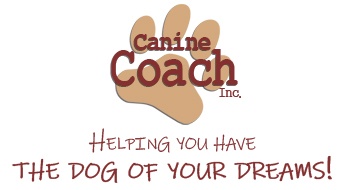Preventing Separation Anxiety – Teaching your dog to be alone (part 2)
In Part 1, we discussed using strict supervision to teach your pup proper potty and chewing behaviors, and the importance of confining your pup to a crate or puppy-proofed safe room when unsupervised (so he won’t have the opportunity to develop bad habits). But our ultimate goal is to have an adult dog who behaves appropriately when left alone in the house without having to rely on so much supervision. Part 2 will give you the steps necessary to achieve that goal.
The teenage stage
If done correctly, by 5-6 months of age most puppies have been successfully potty trained. This is the stage where many people make a big mistake. Because their pup is potty trained, they stop relying on their crate and confinement areas and begin to give the puppy a lot more freedom in the house. Unfortunately this is also the time puppies are cutting molars and serious, destructive chewing can begin. In addition, many puppies are now big enough to get up on kitchen counters and into garbage cans. Puppies at this age are discovering a whole host of new ways to get into trouble, so this is not the time to leave them loose and unsupervised in your home all day!
Right now, you might be thinking “I work all day, how can I be expected to do this when I can’t be home during the day to train my puppy?” If you must be gone all day leave your pup in his puppy safe room. To insure success, find someone to let your pup out during the day to give him a play and potty break. Your puppy should have a break at least every 3-4 hours.
• Ask a family member/friend/neighbor who is available during the day. Offer to pay them or trade favors. You might have a retired neighbor who is home all day and might welcome a chance to help, or a teenager who would love to play with your pup after school. Get creative!
• If necessary, hire a dog walker or pet sitter to visit your home when needed.
Remember that this is a temporary situation: your puppy will eventually be more comfortable staying at home alone for longer periods. But you need to spend the time training your puppy first, it will be time well spent!
Tips for Success:
• A tired dog is a good dog. Exercise your dog in the morning–this relaxes your puppy and helps with their stress when you leave.
• Expand your dog’s access to the house one room at a time, and puppy-proof the room as much as possible before you leave. Be sure to move anything that is valuable or dangerous out of your dog’s reach.
• Begin with leaving for very short periods. Leave for five to ten minutes to start, extending the time as your dog proves himself.
• Time of day matters. Initially leave your dog alone in the afternoon–dogs are more inclined to sleep during that time. When your pup is sleeping he is not getting into trouble.
• Provide plenty of appropriate chew toys to keep him busy and make sure you’ve taught your pup how to find his toys. Occasionally provide a new toy to pique his interest, and use stuffed food toys to keep him busy for longer periods of time.
• Don’t expect to be able to leave your dog for a full day until they are socially mature, (12-15 months for small dogs, up to 2 ½ -3 years for some giant breeds.)
As Karl got older and his behavior improved, we were able to give him more freedom, eventually allowing unsupervised access to the house when he was around 2 ½ years old. The length of time it takes for your dog to get to this point may vary, but the end result will be the same – a dog that is more comfortable staying at home alone.
And finally, boredom and loneliness is one thing; separation anxiety is another. If you suspect your dog suffers from separation anxiety please consult a force free dog trainer or behaviorist in your area.
